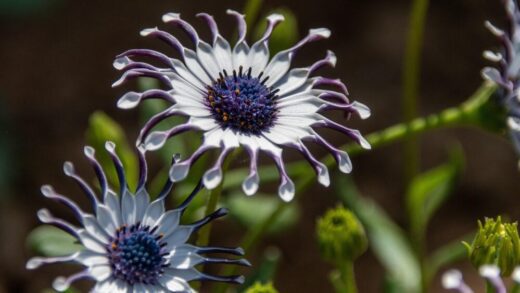Light is the elemental force that fuels the life of a garden, and for the Asiatic lily, it is the artist’s brush that paints its vibrant, saturated colors. These stunning perennials are children of the sun, and their entire performance, from the height of their stems to the number and intensity of their blooms, is directly dictated by the amount of sunlight they receive. Understanding their specific light requirements is not a minor detail; it is the most fundamental aspect of their care. Placing an Asiatic lily in the right location is the single most important decision a gardener can make to ensure its success and unlock its full, spectacular potential.
Asiatic lilies are quintessential sun-lovers, a fact that cannot be overemphasized. To thrive and produce the magnificent display of flowers for which they are known, they require a location that provides at least six hours of direct, unfiltered sunlight each day. This is often referred to as “full sun” in horticultural terms. Sunlight is the energy source for photosynthesis, the process by which the plant converts light into the chemical energy it needs to grow strong stems, develop healthy foliage, and, most importantly, produce an abundance of large, colorful flowers.
When deprived of adequate sunlight, an Asiatic lily will exhibit several tell-tale signs of stress. The stems will often become elongated and weak, a condition known as etiolation, as the plant stretches in a desperate search for more light. This results in a leggy, spindly appearance, and the weakened stems may be unable to support the weight of the flowers, causing them to flop over. Furthermore, a lily grown in too much shade will produce significantly fewer flower buds, and the flowers that do manage to open will often be smaller and their colors will appear washed-out and pale.
The ideal location for planting Asiatic lilies is in an open area of the garden that is not shaded by large trees, buildings, or other tall plants. An east-facing location, where the plants receive the gentle morning sun and some protection from the intense late afternoon heat, can be ideal, especially in hotter climates. However, a south-facing or west-facing exposure is also excellent, provided the plants receive enough moisture to compensate for the higher temperatures. Careful observation of your garden’s light patterns throughout the day is essential before deciding on a permanent home for your lilies.
While the “six hours of sun” rule is a solid guideline, it is also worth noting the concept of “cool feet.” Lilies perform their absolute best when their flowers and leaves are basking in the sun, but their roots and the bulb itself prefer to be in cool, shaded soil. This can be achieved by planting low-growing perennials or groundcovers around the base of the lilies. These companion plants will shade the soil, helping to keep it cool and conserve moisture, creating the perfect microclimate for the lily’s root system while allowing the flowering stalks to reach for the sun.
More articles on this topic
The effects of insufficient light
The consequences of planting an Asiatic lily in a location with insufficient light are significant and can lead to long-term decline of the plant. The most immediate and noticeable effect is on flowering. A lily in a shady spot may not bloom at all, or it may produce only one or two small, lackluster flowers. This is because flower production is an incredibly energy-intensive process, and without enough sunlight to fuel photosynthesis, the plant simply does not have the resources to create a proper floral display. The bulb will be unable to store enough energy for the following season, leading to a cycle of diminishing returns.
In addition to poor flowering, inadequate light leads to structural weakness. The etiolated, or stretched, stems are not just an aesthetic problem; they are physically weaker and more susceptible to being damaged by wind or heavy rain. The plant will often lean or bend dramatically towards the nearest light source, a phenomenon known as phototropism. This can result in a crooked, unattractive plant that requires staking for support, a measure that is often unnecessary for lilies grown in full sun.
Plants grown in shady, damp conditions are also more susceptible to fungal diseases. Reduced sunlight means that the foliage stays wet for longer periods after rain or morning dew, creating the ideal environment for pathogens like botrytis blight (gray mold) to take hold. The lack of direct sun and poorer air circulation in a shady spot exacerbates this problem. A plant that is already weakened by a lack of light will have a compromised immune system, making it an easier target for both diseases and pests.
If you have mistakenly planted your lilies in a spot that is too shady, it is best to move them. The ideal time to transplant lilies is in the autumn, after the foliage has died back. Carefully dig up the bulbs and move them to a new location that meets their sunlight requirements. While the plant may take a season to fully recover from the move and the previous light-deprived conditions, relocating it to a sunny spot is the only way to restore its health and encourage the kind of robust growth and spectacular blooming that Asiatic lilies are capable of.
More articles on this topic
Partial shade and hot climates
While the full sun mantra is paramount for Asiatic lilies, there is a slight exception, particularly for gardeners in very hot climates. In regions where the summer sun is exceptionally intense and temperatures are consistently high, a location that offers some light afternoon shade can be beneficial. The harsh, direct sun of a mid-to-late afternoon in a hot climate can sometimes scorch the leaves and cause the vibrant flower colors to fade more quickly. In these specific situations, partial shade can help to prolong the life of the blooms and reduce heat stress on the plant.
The ideal “partial shade” scenario in a hot climate would be a location that receives direct sun for at least six hours in the morning and early afternoon, but is then protected by the shade of a tree or building during the hottest part of the day, typically from late afternoon onwards. This arrangement provides the plant with all the light energy it needs for robust growth and flowering, while offering some respite from the most extreme heat. This is different from dappled shade, where the light is filtered through leaves all day, which is generally not enough light for lilies.
It is important to differentiate between beneficial afternoon shade in a hot climate and the detrimental effects of a genuinely shady location. A plant that receives only two or three hours of direct sun per day will not thrive, regardless of the climate. The key is to ensure the plant still receives its minimum requirement of six hours of direct sun. The afternoon shade is simply a protective measure to mitigate the negative effects of extreme heat, not a substitute for the lily’s fundamental need for sunlight.
Gardeners in cooler or more temperate climates generally do not need to worry about providing afternoon shade. In these regions, Asiatic lilies will perform best when given as much direct sunlight as possible throughout the entire day. The sun in these climates is less intense, and the plants will benefit from every hour of light they can get. Always consider your specific climate and local conditions when selecting the perfect planting site for your lilies.
Light requirements for container-grown lilies
The light requirements for Asiatic lilies grown in containers are exactly the same as for those grown in garden beds: a minimum of six hours of direct sunlight per day. The advantage of growing lilies in pots is the ability to move them around to ensure they are receiving optimal light conditions. You can place the pot in the sunniest part of your patio, balcony, or deck to maximize its exposure. If you find that a particular spot is not providing enough light, you can easily relocate the container to a better position.
One challenge with container-grown lilies in full sun is that the soil in the pot can heat up and dry out very quickly. The black plastic pots often used by nurseries are particularly prone to absorbing heat. This can stress the plant’s root system. To mitigate this, you can place the plastic nursery pot inside a larger, more decorative ceramic or wooden planter. The air gap between the two pots will act as an insulator, helping to keep the roots cooler. Using light-colored pots can also help to reflect some of the sun’s heat.
Consistent watering is even more critical for potted lilies in a full sun location. The combination of direct sun and wind can cause the soil to dry out rapidly, so you will likely need to water them daily during the hottest parts of the summer. Always check the soil moisture before watering to avoid overdoing it, but be prepared for a more demanding watering schedule compared to lilies planted in the ground, where the soil volume is much larger and retains moisture for longer.
When placing your container, be mindful of reflective heat. A pot placed on a concrete patio or next to a south-facing brick wall will be exposed to not only direct sunlight but also intense reflected heat. This can create a very harsh microclimate. While the lily loves the sun, this extreme heat can be stressful. If possible, position the pot where the plant gets full sun but the pot itself might be shaded by other, shorter plants, or choose a location with good air circulation to help dissipate some of the heat.


















